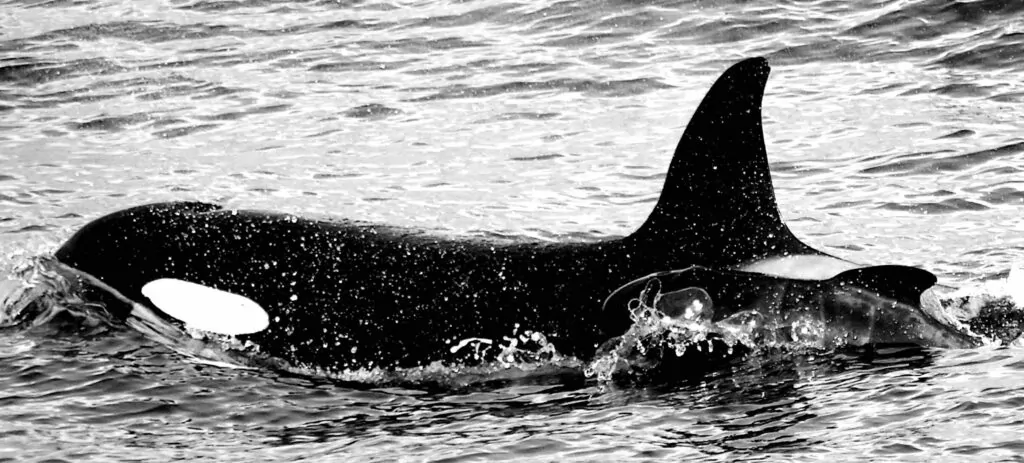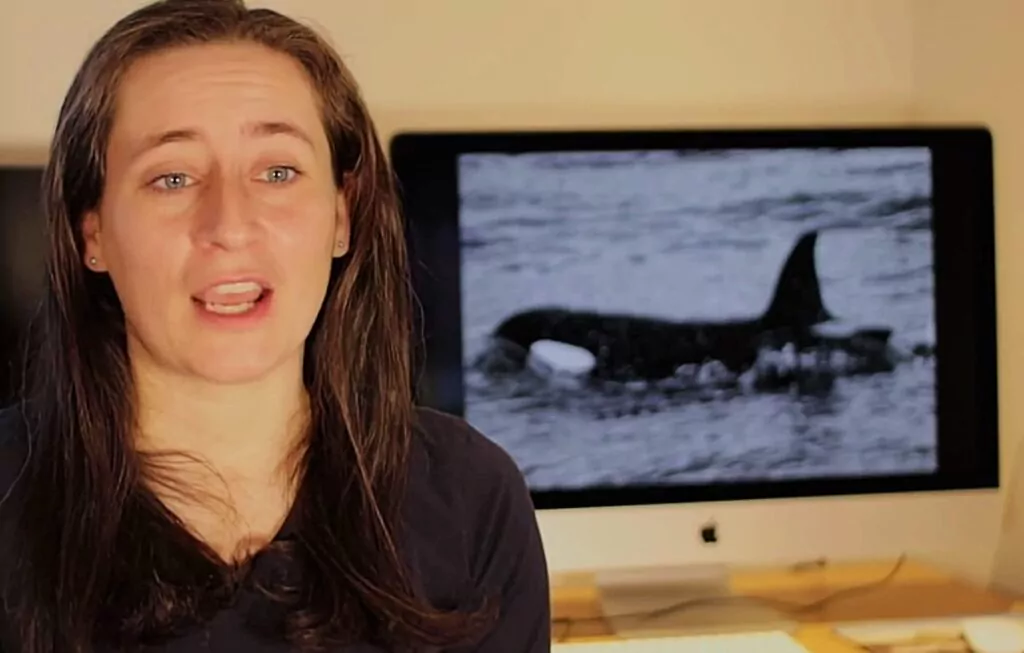The first-known case of a pilot whale calf being “adopted” following a possible abduction by a female orca has been documented by scientists in Iceland.
Interactions between killer whales and long-finned pilot whales, which gather in the same waters in Iceland especialli summer, are not unusual but tend to be hostile. Orcas (Orcinus orca) are generally larger than long-finned pilot whales (Globicephala melas), and both are among the biggest of the oceanic dolphins. They are all highly social cetaceans and tend to remain with their birth pods through their lives.
Also read: Why are killer whales attacking boats? Expert Q&A
The female orca, known as Saedis, was first seen with what was judged to be a newborn calf in August 2021. There were no other pilot whales in the vicinity but she was accompanied by two other foraging adult orcas.
Saedis appeared to be actively nurturing the calf, because it was swimming in the “echelon position” directly behind the orca’s pectoral fin. This would allow it to be carried along by the adult’s pressure wave without having to waste energy using her tail-fluke for propulsion.

Saedis was known never to have been a mother, so it is thought possible that she took the pilot whale as a substitute calf. It appeared emaciated, because she would have been unable to nurse it. The sighting represented an unprecedented case of what the scientists describe as “alloparental” behaviour between the species.
A year after the sighting, Sædis was spotted among a group of about 10 orcas, without the calf but close to a group of about 40 long-finned pilot whales. The latter kept chasing the orcas away but each time they would slowly approach again.
This might have represented “an active effort to obtain another long-finned pilot whale calf” for Saetis or another female, say the scientists, because it did not fit “any previously observed behavioural patterns described for interactions between these species” – suggesting that the first adoption might have been more abduction than adoption of a stray.

The scientific team was led by Marie-Thérèse Mrusczok of the West Iceland Nature Research Centre (Náttúrustofa Vesturlands), one of eight such independent regional institutes in the country, working with Orca Guardians Iceland (Grundarfjörður).
They studied existing and recorded new behavioural, locational and photographic data for the orca group between 2011 and 2022, and for long-finned pilot whales between 2019 and 2022 to explore the background to the unexpected observations, and their study has now been published in the Canadian Journal of Zoology.
In 2019 Divernet carried the story of another unique inter-genus adoption among marine mammals, when a bottlenose dolphin was seen caring for a baby melon-headed whale in French Polynesia – over a three-year period.
Also on Divernet: Diver’s Orca Binge Brings Record Fine, Orca Copycats – And A Mystery Whale, Orcas ‘Like Kids At A Party’, Female Killers v Blue Whale: A World First

